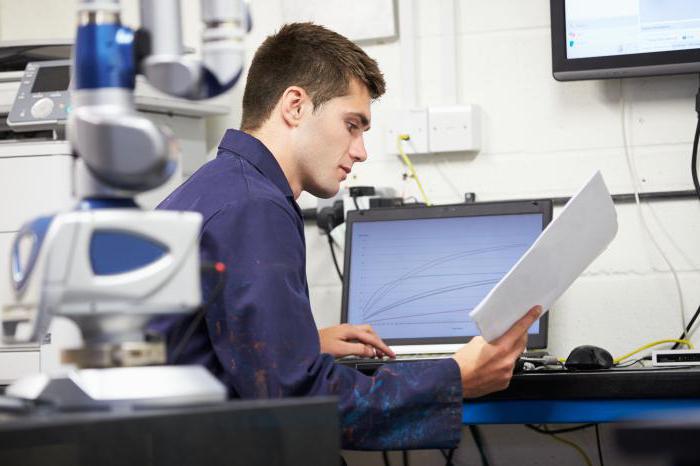Measuring instruments and technologies for their application are becoming more complicated as industry develops. In modern production, the use of ineffective methods of analysis, testing and control is unacceptable. High-precision equipment requires the most reliable knowledge of the characteristics and properties of materials. In turn, metrology, standardization and certification cover almost the entire range of problems associated with measurements and the formation of common principles in assessing product quality. At the same time, modern scientific and technical work indicates that the currently relevant tasks of metrological research are only the next step to expand the ranges of measuring quantities and, accordingly, the possibility of obtaining more accurate data.

What is metrology?
Metrology is a science dealing with issues of measurement, as well as the study of new methods and approaches to this process. One of its main subjects is the development of means to improve the accuracy of the data obtained. A feature of this science is that, unlike theory, it involves the study of objects experimentally. The scope of the study of metrology is quite diverse and provides for various measurement goals, methods, conditions and types of communication with the object under study. In particular, the use of its methods can set the following goals:
- diagnostic;
- for the control report;
- obtaining technical data;
- research for a laboratory experiment;
- establishment of reference parameters, etc.
There are also various approaches to providing data that metrology provides. Standardization and certification are integral components of metrological research, allowing to unify measurement methods and control quality indicators of services and products.
What is standardization?
The application of different standards and rules regarding the regulation of various activities is inefficient. In this regard, uniform standards are used to establish requirements or recommendations regarding the organization of work and production operations. According to the definition, standardization is a systematic approach to the development of certain rules that contribute to streamlining activities in a particular area.

This process is ensured through the implementation of requirements, regulations and standards in order to solve the tasks. By the way, the latter may be relevant at the moment and planned. As a result, the standardization of quality allows you to determine the degree of compliance of the investigated service or product with the declared purpose. At the same time, the standards make it possible to remove technical obstacles in the exchange of goods, and also lay the foundation for scientific and technological progress.
Standardization goals
To understand the goals for which regulatory documents are being developed, they should be divided into general and specific. In the first case, standardization and metrology aim to ensure the following factors:
- informationally declared and actual technical compatibility of products with ensuring its interchangeability;
- safety of goods and services in relation to a person, his property and the environment;
- achievement of quality parameters of products and services that correspond to the current level of scientific and technological progress;
- savings in the use of resources;
- ensuring the uniformity of measurements (metrological tasks);
- safety of production facilities; this should take into account the risks of emergencies and natural or man-made disasters.
From the point of view of establishing specific goals, standardization is a means of developing standards related to a particular area of production, type of product or service.
Standardization levels

To date, there are three levels of standardization. These include international, regional and national. In each case, its own peculiarities are assumed in regulating approaches to the process of developing standards, as well as to admitting participants. At the regional level, the standardization system is open for activities within its framework to the state bodies of a particular region in the world. The national level involves the participation of relevant authorities from a particular country. However, in this case, standardization sublevels are also assumed.
- Administrative and territorial. The principles for the development of standards make it possible to establish standards and rules regarding the facility, operating in the same territorial unit of the state (region, region, etc.).
- Industry. At this sublevel, standardization is a tool that allows you to develop rules and regulations for certain areas of industry and production.
- State. In this case, the result of standardization is the standards developed and applied within one country.
International standardization

This variety should be considered separately, as it has many differences and is the most significant from the point of view of world trade. To begin with, it should be noted that international standardization involves the participation of organizations of the relevant profile regardless of the particular state.
Among these organizations, the following can be distinguished:
- ISO organization directly involved in standardization issues;
- IEC - a commission whose activities are related to the development of electrical standards;
- ITU is a union whose members represent the telecommunications sector.
The ISO organization is considered the most authoritative body whose goal is to develop standardization for more efficient exchange of goods and mutual assistance at the global level. The relevance of IEC and ITU organizations is also growing thanks to the development of new programs for the IT and telecommunications sectors. Together, international standardization brings together representatives of intellectual activity, business and industry, as well as non-governmental enterprises in order to increase the efficiency of world production and provide quality goods to the end consumer.

Varieties of standards
Regardless of the level at which standardization is carried out, the result of this work may relate to different objects. Accordingly, the fruit of this activity, that is, the standard, can relate to a certain type of the studied object. In particular, standardization and metrology allow you to set the standards and regulations of the groups described below.
- Fundamental standards. They cover activities in a specific area, providing technical standards and organizational regulations as a result. Such documents contribute to mutual understanding and strengthening of communication between representatives of different fields of science and industry.
- Standards for goods and services. In this case, it is supposed to establish rules and regulations that apply to a homogeneous group of goods or specific services.
- Standards for production and work processes.Determine the requirements for the implementation of technological, production and work operations. This may be the standardization of documents in enterprises. Provides document management in accordance with certain rules.
- Standardization of control methods. Standards are established for measuring operations, testing and analysis of products.
What is certification?

Along with methods for developing standards and regulations, there are special bodies that confirm the conformity of a product or service with established requirements. At this stage, standardization and certification complement each other, eliminating contradictions in the assessments of the quality of the object. If we turn to the definition, then certification is a procedure that confirms that a particular object really meets the standards of the technical regulation, standards, and also the terms of the contract.
Why is certification required?
By and large, this form of certification is needed to increase consumer competence in the selection of products and services. On the other hand, we can recall that standardization is not only the standards according to which the quality of products is determined. Standards are of considerable importance when creating uniform regulations for increasing production efficiency. Thus, certification can confirm the presence of certain properties required for more productive work of enterprises in a particular industry.

Quality certification
One way or another, the main task that standardization and certification can solve is to assess the quality of products and services. Quality, in turn, is a combination of certain properties of a product, which determine its suitability for consumption. In this assessment, a significant role is played by the accuracy of measuring and characterizing the product. For this, all new technical means are used, which allow high-quality fixation of quality indicators.



